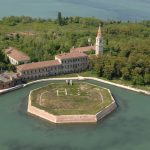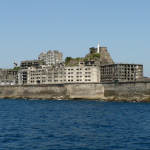
Pripyat is a small town that once thrived but was abandoned due to the Chernobyl power plant accident. It is now popular as a tourist destination.
History
Even in the human dimension, 50 years is not a long time, let alone cities. Some are thousands of years old, and still alive. However, history has designated the atomic city, the satellite city of the Chernobyl nuclear power plant, to exist in another dimension. And it has had at least three lives.
One began in 1970. Many of Pripyat’s first residents are now over 70 years old: the city was Komsomol, a fixed place. The children were born with a long-range plan: the first stage of the nuclear power plant was designed for 25,000 residents and the second, across the river, for another 30-35,000. Because it was planned to have eight power units. At the time of the disaster, the first four were fully operational, two more were under construction and two more were being designed. You could get to work at the plant by bus, or you could walk to it – a kilometre in all!
The first life of the young and flourishing city was cut short at the age of 16. During the night of the catastrophe and the days and months that followed, Pripyat was, figuratively speaking, grey and hunched over, blind, deaf and virtually paralysed.
Its second life hung in the balance, literally and figuratively: the degree of radioactive contamination was incompatible with anything. For this reason, former residents were allowed to take almost nothing to the evacuation, except the most basic personal items (even a suitcase). Even those who left with small children. And some families accumulated things – not to compare with “continental”: the supply of the city was carried out according to the highest category. Apparently, people came to Pripyat to do their shopping from neighbouring Chernihiv, Belarus and even from the capital Kiev: communication along the Dnieper on hydrofoil boats was fascinating and accessible, because the Soviet state subsidised this (and other) means of transport. Therefore, the looters who then sneaked into the “zone” for decades had something to amass in the abandoned flats when the police stopped policing them. Whether that was good for the new owners of the “assets” is not known. And values have changed over the years: who needs those radios and rotary phones nowadays?
Pripyat’s third life is a tourist one. With the intensification of trips to the so-called Chernobyl exclusion zone, it has become possible to walk the streets of the abandoned city, see its residential buildings, schools, the Palace of Culture of Electrical Engineers and shops. Including the one where the supermarket principle was first introduced: paying at the cash register on the way out for all purchases at once. For the Soviet Union, this was an unprecedented shopping service option. It is clear that now a tourist goes to Pripyat not for a supermarket, but for impressions. And there are quite a few impressions of this “lost world”: every year the thickets become denser, nature takes its course, so in summer you can see almost nothing on the old streets, and it is not recommended to go into the thickets – the city is ruining, and it is pitiful…. However, in those seasons, when there is no thick foliage, you can distinguish outstanding mosaics in size and artistic conception on the houses, and newly appeared graphics, and many other things.
Description of the site
Unlike Chernobyl, Pripyat’s history is less rich: it was founded in the 1970s as “the city of atomic workers”: as Ukraine’s first nuclear power plant was being built nearby, it was necessary to provide housing and comfort for workers and their families. Pripyat had cinemas, sports complexes, an arts palace, a hotel and shopping centres. However, the accident at the Chernobyl nuclear power plant cut short the rich life of the city. All the city’s residents were urgently evacuated; they were asked to leave their personal belongings behind, assuring them that they would soon be able to return. As is well known, no one has been able to return home, and the once thriving city of Pripyat is deserted.
What to do
The atmosphere in Pripyat is very similar to that of Chernobyl, and the two cities are inseparable. In addition to the exclusion zone, there are often excursions, which are very popular with tourists: many like to tickle their nerves when they find themselves in the middle of an abandoned grey city. The excursions and vivid experiences that can be had here are the main attraction of Pripyat, although the sight of the empty city is rather depressing. Knowing that the events of many films, books and games are set in Pripyat, it is also possible to imagine yourself as the hero of a story. The aftermath of the nuclear power plant accident leaves its mark: the forest near Pripyat absorbs radiation from the ground and the river is still radioactive, although some still dare to fish in it.
Conclusion
A trip to the ghost town of Pripyat will surely be remembered by everyone, but not everyone will be able to keep calm in this city. Therefore, you should be mentally prepared before booking the excursion. Otherwise, bright impressions are guaranteed.
You may also like:


